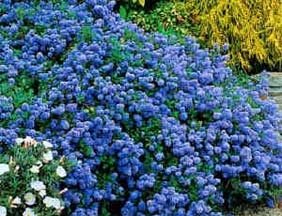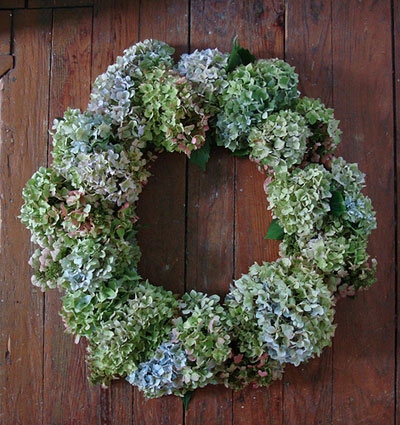It’s beginning to look a lot like Christmas around here. The community trees are lit, homes and businesses are brightly decorated and Mother Nature is soaking up that much appreciated rainfall. Santa is looking at the list you secretly keep and if you’ve been good you can probably add one more request to that list. There’s still time to get natives in the ground so add some of these plants to your Christmas list.
The  . If your soil is workable, I’d plant most native plants now. Even a winter dormant plant can benefit from the spring growth if it is in the ground for that to happen. Don’t plant in soil that is still thick gooey mud from the rain. Let the soil drain a bit between storms. Most natives put down roots during the cool wet months which prepares them for the warm, dry summer.
. If your soil is workable, I’d plant most native plants now. Even a winter dormant plant can benefit from the spring growth if it is in the ground for that to happen. Don’t plant in soil that is still thick gooey mud from the rain. Let the soil drain a bit between storms. Most natives put down roots during the cool wet months which prepares them for the warm, dry summer.
Before planting, dig the hole twice as wide as the container but no deeper. If it isn’t damp to the bottom of the hole from the rains, fill the hole with water. Also you may want to mix in some compost with mycorrhizals to break up your clay soil or to amend sandy soil. Mycorrhizals are not fertilizer. They are living microbes that have evolved with plants. They improve nutrient and water uptake by enhancing the absorptive surface of the roots. they also improve the living soil. It is rare that a native plants needs a fertilizer.
Although most natives don’t like their roots cut or messed with, you do need to ensure that the roots aren’t circling round and round. When you remove the plant from the container, check the roots. If they are circling, gently pull them out of the swirl so they can start growing out, away from the plant. Leaving the roots circling could eventually choke the plant later when it’s mature. Water in well. The rains will take care of the rest.
Plants can adapt to conditions that are somewhat like their native area but will survive poorly at best in radically different soils from that which they come from. They can modify but not alter the basic nutrition available in a soil. If a plant grows in serpentine clay it will not be able to grow in sandy loam unless the plant was part of that community.
Good natives to plant if you have clay soil are shrubs like coffeeberry, toyon, western redbud, flowering currant,blue elderberry. Perennials that tolerate heavy soils are douglas iris, hummingbird sage, western sword fern, Chilean aster, foothill penstemon, yarrow and bicolor lupine. Groundcovers and grasses to plant include woodland strawberry, California fescue, blue-eyed grass, purple needle grass and deer grass.
Those of you that live in sandy soils can ask for Nevin’s barberry, native sages, monkey flower, ceanothus and manzanitas. Some good ceanothus varieties are Tilden Park, Frosty Dawn and Joyce Coulter. You can even find some with blooms at this time of year for our resident hummingbirds. Manzanita favorites include Howard McMinn and Vandenberg,
Ask Santa for a California native to plant between storms.

 blossoms aren’t completely dry when you harvest them you can finish them off inside. I also tuck hydrangea flowers into my Christmas tree and use some to decorate an evergreen outside.
blossoms aren’t completely dry when you harvest them you can finish them off inside. I also tuck hydrangea flowers into my Christmas tree and use some to decorate an evergreen outside..jpg) over the soil by The Boy Scouts to preserve the structure and prevent it from packing down again.
over the soil by The Boy Scouts to preserve the structure and prevent it from packing down again..jpg) color ranges from reddish purple, brilliant red to golden orange. Crabapples are good lawn trees and their spring blossoms are stunning. To avoid disfiguring diseases, choose varieties that are resistant to cedar-apple rust, scab and powdery mildew. Among these is ‘Prairiefire‘, with pink flowers and dark red fruit. This tree grows 20 feet tall.
color ranges from reddish purple, brilliant red to golden orange. Crabapples are good lawn trees and their spring blossoms are stunning. To avoid disfiguring diseases, choose varieties that are resistant to cedar-apple rust, scab and powdery mildew. Among these is ‘Prairiefire‘, with pink flowers and dark red fruit. This tree grows 20 feet tall..jpg) r, shading into bronze tones when the weather cools. It even blooms in midsummer for several weeks. Bees will be attracted to it at this time. Thyme prefers sun and poor, sandy soil. Autumn is the best time to install from flats cut into 4" plugs planted about a foot apart. It will fill in within 3 years. Plant them closer together if you’re impatient. You’ll love your new lavender-blooming "lawn".
r, shading into bronze tones when the weather cools. It even blooms in midsummer for several weeks. Bees will be attracted to it at this time. Thyme prefers sun and poor, sandy soil. Autumn is the best time to install from flats cut into 4" plugs planted about a foot apart. It will fill in within 3 years. Plant them closer together if you’re impatient. You’ll love your new lavender-blooming "lawn"..jpg) ck berries are edible although the seeds are bitter. To get a taste of the fruit, though, you’ll have to compete with the birds. Chapparal currant is another tough reliable shrub that blooms early and often, flowering from December through March. The pendulous flower clusters are 2-6 inches long and range in color from dusty pink to rose red.
ck berries are edible although the seeds are bitter. To get a taste of the fruit, though, you’ll have to compete with the birds. Chapparal currant is another tough reliable shrub that blooms early and often, flowering from December through March. The pendulous flower clusters are 2-6 inches long and range in color from dusty pink to rose red.